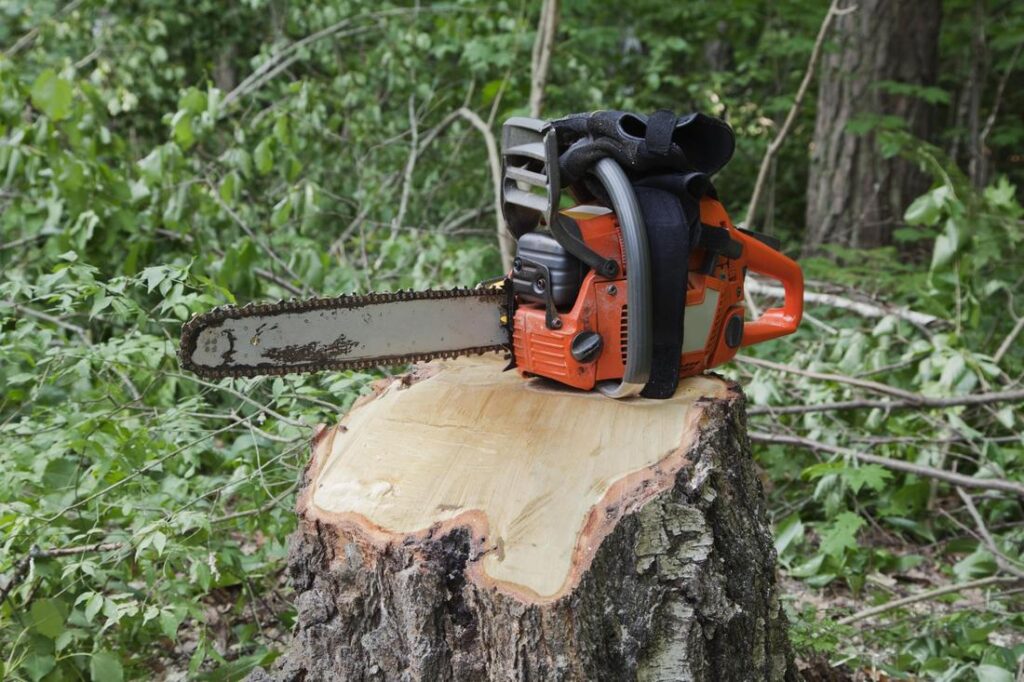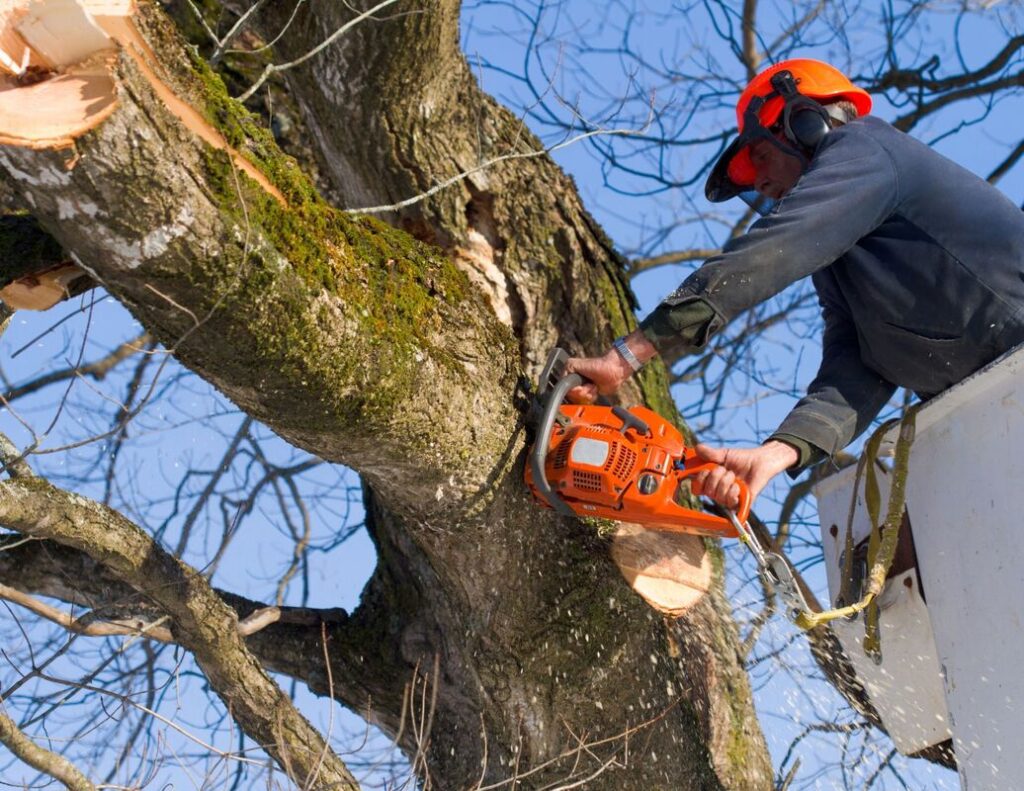Since tree removal is often a complex and potentially dangerous task, it is crucial to have a thorough understanding of what to look for when hiring a tree removal service in the Hills District. This article will guide you through the essential factors to consider, including identifying potential risks with trees, assessing professional qualifications and experience, evaluating safety measures and equipment, understanding the tree removal process, post-removal care and maintenance, and legal considerations for tree removal in the area.
Understanding the Need for Tree Removal
Before delving into the specifics of choosing a tree removal Hills District service, it is essential to grasp why tree removal may be warranted. While trees provide numerous benefits to our environment and communities, there are circumstances where their removal becomes necessary.
When it comes to identifying potential risks with trees, there are several factors to consider. One of the primary reasons for tree removal is the identification of potential risks. Trees that are diseased, dead, or structurally compromised pose a significant hazard to property and people. They can easily topple during storms or even on calm days, causing damage to buildings, vehicles, or worse, leading to personal injury.

It’s important to note that trees with large overhanging branches near power lines or roofs are also a cause for concern. These branches increase the risk of property damage, as they can be easily dislodged during strong winds or heavy rain. Regular inspection of trees for signs of disease or structural issues is important to identify potential risks before they escalate into emergencies.
While not directly related to tree removal, it is worth mentioning that trees can significantly impact property values. Well-maintained and strategically placed trees can increase curb appeal and enhance the overall aesthetic of a property. However, trees that are too close to buildings, obstructing views, or causing excessive shading may negatively affect property values. Thus, tree removal may sometimes be necessary to maintain or enhance property value.
Furthermore, it’s important to consider the ecological impact of trees in urban areas. Trees provide shade, reduce air pollution, and improve the overall quality of life for residents. However, in some cases, the presence of certain tree species can have unintended consequences. For example, invasive tree species can outcompete native plants, leading to a decrease in biodiversity. In such instances, tree removal may be necessary to restore the ecological balance and protect the local ecosystem. You can visit https://linktrace.info/expert-tree-removal-north-shore-what-you-need-to-know to get what you need to know about expert tree removal.
Key Factors to Consider When Choosing a Tree Removal Service
Now that we understand the need for tree removal, let’s explore the key factors to consider when selecting a tree removal service in the Hills District.
When it comes to tree removal, expertise and experience are crucial. Make sure to inquire about the qualifications and certifications held by the tree removal service you are considering. Look for arborists who are certified by reputable organizations, as this indicates their commitment to maintaining professional standards and staying updated with the latest industry knowledge.
Furthermore, consider the experience of the tree removal company. A long-standing history in the field demonstrates their ability to handle various tree removal scenarios and suggests that they have built trust within the community.
But what else should you look for when choosing a tree removal service? Let’s dive deeper into the evaluation process.
Evaluating Safety Measures and Equipment
Tree removal is inherently risky, and accidents can have severe consequences. Therefore, it is essential to evaluate the safety measures and equipment employed by the tree removal service. Ask about their safety protocols, including the use of personal protective equipment (PPE) and safe work practices.
Additionally, inquire about the type of equipment they utilize. Modern, well-maintained equipment not only enhances efficiency but also reduces the likelihood of accidents during tree removal. The presence of specialized machinery, such as cranes or aerial lifts, can also indicate a higher level of professionalism and efficiency.
But safety measures and equipment are just one aspect to consider. Let’s explore another important factor.
Considering Environmental Stewardship
Tree removal should not only be about cutting down trees; it should also involve a commitment to environmental stewardship. When selecting a tree removal service, inquire about their approach to sustainability and environmental impact. Look for companies that prioritize recycling and proper disposal of tree debris.
Furthermore, ask if they have experience in tree preservation and transplanting. Sometimes, removing a tree might not be the only solution, and a knowledgeable tree removal service will be able to provide alternative options that can help preserve the natural beauty of your landscape.
By considering environmental stewardship, you can ensure that the tree removal service you choose aligns with your values and contributes to the overall health of the ecosystem.

The Tree Removal Process Explained
Understanding the tree removal process can help you make more informed decisions and communicate effectively with the tree removal service. Let’s delve into the various stages involved in the process.
Removing a tree is not just about cutting it down; it involves a series of meticulous steps to ensure safety and efficiency. From the initial assessment to the final cleanup, each stage plays a crucial role in the successful removal of a tree.
Initial Assessment and Quotation
The tree removal process typically begins with an initial assessment by the tree removal service. During this stage, the professionals will evaluate the tree, identify potential risks, and provide you with a detailed quotation. The quotation should outline the scope of the work, including tree removal, debris disposal, and any additional services required.
Professional arborists will assess the health of the tree, its proximity to structures, and any potential obstacles that may affect the removal process. This thorough evaluation ensures that the tree removal service is well-prepared and equipped to handle any challenges that may arise.
It is advisable to seek multiple quotations from different tree removal services to compare prices and ensure you are getting the best value for your money. Additionally, consider the reputation and experience of the tree removal company to make an informed decision.
The Actual Tree Removal Process
Once you have selected a tree removal service and agreed on the quotation, the actual tree removal process can commence. The specific techniques and equipment used will depend on the characteristics of the tree and its surroundings.
Tree removal professionals prioritize safety throughout the process, using specialized equipment and following industry best practices. From chainsaws to cranes, each tool is carefully selected to ensure the efficient and safe removal of the tree.
Typically, the process involves cutting the tree into manageable sections, starting from the top and working downward. The tree removal professionals will employ various methods, such as using ropes and harnesses to control the descent of sections and minimize potential damage to surrounding structures. Additionally, they will ensure that the debris is removed promptly and the area is left clean and tidy.
Post-Removal Care and Maintenance
After the tree removal process is complete, there are essential steps to take to ensure proper post-removal care and maintenance. Taking these steps will not only enhance the aesthetics of your property but also contribute to the overall health and sustainability of your landscape.
One crucial aspect of post-removal care is assessing the impact of the tree removal on the surrounding vegetation and soil. Understanding how the removal may have affected the ecosystem can help in determining the necessary steps to restore balance and promote new growth.
Stump Grinding and Removal
Tree removal usually leaves behind a tree stump. Stump grinding is an effective method to eliminate the remaining stump, allowing for better use of the land or preparation for new landscaping projects. By grinding the stump, you not only remove a potential safety hazard but also prevent the spread of diseases and pests that might affect other plants in the vicinity.
Engaging a tree removal service that offers stump grinding and removal services can save you the hassle of finding another contractor for this specific task. Additionally, professionals can ensure that the stump is ground to a sufficient depth to prevent any regrowth, providing a clean slate for future landscaping endeavors.
Landscaping After Tree Removal
The removal of a tree often leaves a noticeable void in the landscape. It is crucial to plan for proper landscaping after tree removal to ensure that the area seamlessly integrates with the surrounding environment. This integration not only restores the visual balance but also maintains the ecological harmony of the space.
You may consider planting new trees, shrubs, or flowers in the space to fill the void and enhance the aesthetic appeal of your property. Careful selection of plant species is essential to ensure compatibility with the local climate and soil conditions, promoting healthy growth and longevity. Consulting with a professional landscaper or arborist can provide valuable guidance on suitable options for your specific needs, taking into account factors such as sunlight exposure, water requirements, and maintenance considerations.
Legal Considerations for Tree Removal in Hills District
Before proceeding with tree removal, it is essential to consider the legal aspects in the Hills District.
Understanding Local Tree Preservation Orders
Local councils often have tree preservation orders (TPOs) in place to protect trees of significant ecological or aesthetic value. These orders restrict the removal or pruning of protected trees without proper authorization.
It is crucial to familiarize yourself with the local TPOs and determine whether your tree falls under their protection. Failure to comply with TPOs can result in fines and legal consequences.
Moreover, some trees may have historical significance or be part of a designated heritage area, adding another layer of protection. Understanding the full scope of regulations surrounding tree removal ensures that you stay on the right side of the law and preserve the unique character of the Hills District.
Seeking Necessary Permissions and Permits
In addition to TPOs, there may be other permits or permissions required for tree removal in the Hills District. Contact the local council to ascertain the specific requirements and ensure compliance.
Furthermore, if your property is located near a waterway or environmentally sensitive area, additional permits may be necessary to prevent erosion or habitat disruption. Taking the time to navigate the permit process demonstrates a commitment to environmental stewardship and responsible land management.
Failure to obtain the necessary permits can lead to complications and delays in the tree removal process. It is essential to factor in the time needed to secure all required permissions to avoid any setbacks in your tree removal project.
In conclusion, when hiring a tree removal service in the Hills District, consider the potential risks with trees, assess professional qualifications and experience, evaluate safety measures and equipment, understand the tree removal process, plan for post-removal care and maintenance, and adhere to legal considerations. By doing so, you can ensure a safe, efficient, and compliant tree removal that meets your needs and protects your valuable property.
Other article: Top Rated Sydney Flower Delivery Services
